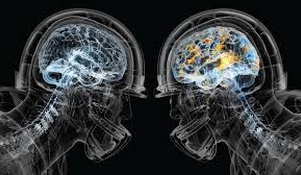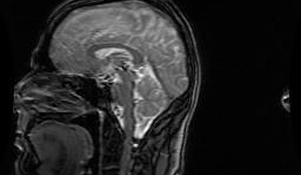Former NFL Players need to get neurological exams before it's too late

On February. 3, 2016 the New York Times published an article entitled “Ken Stabler, a Magnetic N.F.L. Star, Was Sapped of Spirit by C.T.E.” The author of the article, John Branch, says that “Under the current deal, Stabler’s family would not be eligible for compensation because Stabler’s C.T.E. was diagnosed after the April 2015 cutoff.”
That statement is true with respect to the family not being eligible for compensation under the “Death with C.T.E.” provision of the Settlement, but it would be misleading to say that the family would not be eligible for any compensation – period.
If you look at the specific language on page 8 of the Long Form Notice of the Settlement - which you can read here - you will see the following language:
Representative Claimants of deceased Retired NFL Football Players who were diagnosed with ALS, Parkinson’s Disease, Alzheimer’s Disease, Level 2 Neurocognitive Impairment (i.e., moderate Dementia) or Level 1.5 Neurocognitive Impairment (i.e., early Dementia) prior to death, or who died prior to July 7, 2014 and received a diagnosis of Death with CTE. [Note: the cutoff date of July 7, 2014 was subsequently changed to April 22, 2015 - per court order]
As you can see, I have underlined and bolded the words diagnosed prior to death. That is an important distinction – not to be confused with the next section of the clause "or who died prior to July 7, 2014 and received a diagnosis of Death with CTE."
If Ken Stabler received a qualifying diagnosis of level 1.5 or level 2 Neurocognitive Impairment from a certified neurologist at any time prior to his death, that diagnosis could be used by the family in submitting a claim for compensation under the Settlement. I don’t know if Ken Stabler did, or didn’t get diagnosed, but the fact is Ken knew that he was having memory problems and those around him saw it too.
“The cancer took him away, but his mind was definitely in a pretty quick downward spiral,” Kendra Stabler Moyes told the New York Times. “I’m grateful that he was still so present, still so there. Because I definitely don’t think he would have been in even three more years.”
It’s not certain whether Ken would have qualified for an award under the Settlement, but according to Dr. Ann McKee, chief of neuropathology at the V.A. Boston Healthcare System who conducted an examination of his brain “He had moderately severe disease. His changes were extremely severe in parts of the brain like the hippocampus and amygdala, and those are the big learning and memory centers,” McKee said. “And when you see that kind of damage in those areas, usually people are demented. So if he was still functioning reasonably well, he was compensating, but I don’t think that compensation would have lasted much longer.”
I’m only bringing this issue up, to remind former players that it is critical to get a diagnosis as soon as possible if you think you might be suffering from some type of cognitive impairment. If you don’t do it before you die, then it will be impossible for your family to file a legitimate claim on your behalf.
Paying for a certified neurologist and all the testing that is required to render a diagnosis can be very expensive - unless you have Medicare or good private or company sponsored health insurance. One of the key benefits of the Settlement is that the NFL will spend up to $75 million for baseline neuropsychological and neurological examinations and additional medical testing, counseling and/or treatment if a player is diagnosed with moderate cognitive impairment during the baseline examinations.
Unfortunately, the appeal of the Concussion Settlement is holding up the establishment of the BAP (Baseline Assessment Program) and the money for testing, evaluation and treatment. As a result, many former players are holding off on getting these crucial services.
One of the other unintended consequences of the delay caused by the appeal process, is that some former player’s monetary awards will be reduced because they have had to wait to get diagnosed. Many players have now moved into a different “age category.” Remember, the awards are based on when you get diagnosed.
Every 5 years, the monetary awards are reduced as players get older. For example if a player was between the ages of 50 and 54 years when they were diagnosed with level 2 neurocognitive impairment they would receive $1,200,000, but if they don’t get diagnosed until age 55, their award goes down to $950,000. That’s $250,000 less!
I read where Joe Kapp was recently diagnosed with Alzheimer’s disease. I’m not sure when Joe received his diagnosis, but he and his family are now relatively assured of receiving compensation under the NFL Concussion Settlement. That will only happen if the Court of Appeals upholds the lower court order issued by Judge Brody - and no additional appeals are filed.
The former players that appealed the Settlement want certain protections put in place for those who develop other symptoms associated with C.T.E., such as mood swings, headaches, impulse control, depression and suicidal ideation. At the November 2015 hearing, the judges appeared skeptical of their arguements, noting that those conditions are widely prevalent in the general population and that players who developed those conditions would not necessarily have C.T.E.
One of the good things about the Concussion Settlement is that players don’t have to prove they have C.T.E. to get an award. If a player is diagnosed with the memory and executive functioning problems that are associated with the disease, they could be eligible for compensation.
Former players have been waiting a long time for the Settlement to become finalized. I wish Ken Stabler and all the other former players that started the litigation against the NFL - but have since passed away - could be there to see us cross the finish line. On that day I’ll play Sweet Home Alabama on my guitar to remind me of the “Snake” and his Hall of Fame life.






